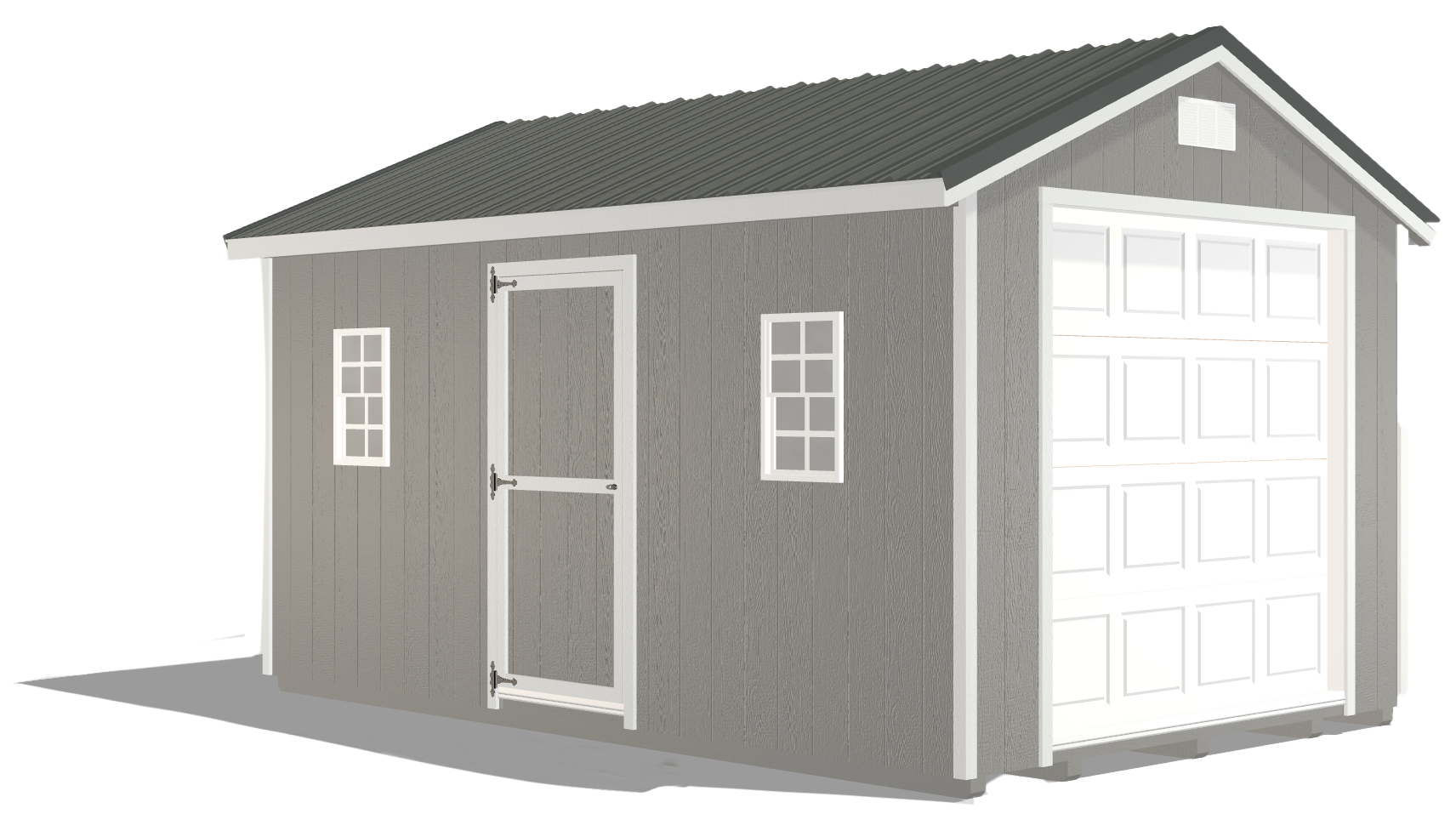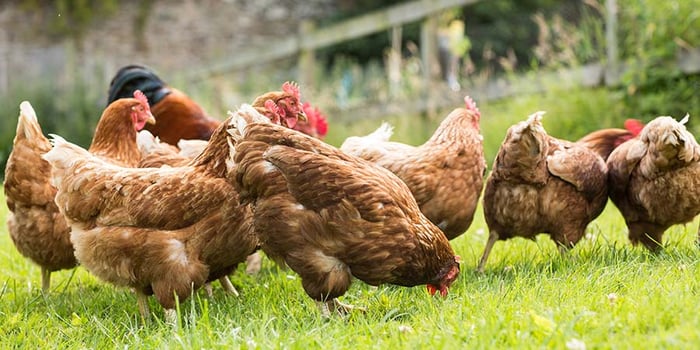6 Features Every Homestead Chicken Coop Should Have
by Dakota Storage Buildings, on May 20, 2021
Before you buy or build a chicken coop, consider these essentials.
If you’re interested in raising homestead chickens in your backyard, you’ve likely researched which chicken breed is best for your needs and may have even settled on how many chickens they want. Now it’s time for a coop. Before you look up coop building plans or compare prefab coop options online, consider these basics — that is, what chickens need in a coop to be healthy, safe, and encouraged to produce many fresh, delicious, and nutritious eggs.
In this article, we’ll review six features that every coop should have, regardless of climate and chicken breed. Knowing these features will help you build or purchase the right coop for your backyard chickens.
 1. Security
1. Security
Protecting your flock from potential predators is a crucial aspect of owning and raising homestead chickens. Whether you choose to raise free-range chickens or not, you'll still need to provide a safe place for your chicken to sleep at night. Due to chickens' immobility and somewhat docile nature, they serve as easy prey for a number of predators, including foxes, raccoons, opossums, and hawks.
Keeping predators away from a free-range flock can be challenging if they don't have a coop, especially if they’re ranging over a large area. While you can provide dense brush or plant shrubs in their territory to help them hide them from predators, keeping your chickens in a coop during the night tends to be a safer and more reliable solution.
 2. Vents
2. Vents
For temperature control and air regulation, chicken coops need to be adequately ventilated day and night. Additionally, they should be kept cool in the summer and dry in the winter. Generally speaking, chickens do best in temperatures below 75°F but can survive in temps up to 90°F. Fortunately, correct ventilation helps to regulate and maintain this range.
Chickens generate lots of water vapor from both their breath and excrement, creating humidity in the coop. High humidity — particularly in cold weather — makes chickens more susceptible to respiratory illness and frostbite. Proper ventilation will remove this threatening moisture. Most chicken breeds can withstand surprisingly cold temperatures without getting frostbite as long as the air inside the coop is dry.
Ventilation can be as simple as holes in the coop walls covered with hardware cloth or welded mesh to keep snakes and vermin out, but let fresh air in the bottom of the coop and stale air out of the top. If you choose to buy a coop, you'll find the most come properly ventilated — one less thing that you’d have to worry about.
 3. Roost
3. Roost
Chickens like to sleep up and off the ground at night. Roosts provide the perching space they need for a good night's sleep. Although some chickens prefer to be by themselves, most sleep next to one another on the same roost for balance and warmth during cold weather.
If you’re constructing a coop and need to make a roost, a good rule of thumb is give 6-10 inches of roosting space per bird. Roosts should be at least two feet off the ground and can be as simple as a ladder fastened to the wall at an angle or sturdy twigs attached to the coop's walls. If you’re purchasing a coop, most premium prebuilt options include a built-in roost.
 4. Durable and Easy-to-Clean Flooring
4. Durable and Easy-to-Clean Flooring
Chicken coops need both a sturdy floor and bedding to cover them. Raised coops often have flooring that’s plastic, wood, or chicken wire. The bedding you use to cover the floor helps control moisture, provide insulation, and make cleaning easier. Regularly cleaned coops keep hens healthy, provide rodent and insect control, and prevent moisture buildup that can result in bacterial and fungal growth.
If you plan to buy a coop, some premium coops come with durable and easy-to-clean flooring like LP ProStruct Flooring with SmartFinish and Epoxy Finish that holds up to everyday wear, resists decay and warping, and is easy to brush clean. Some options have a removable tray for quick dumping and convenient cleaning.
 5. Run
5. Run
Birds need outdoor space, fresh air, and access to dry soil or dirt where they can dust bathe, keeping themselves clean and parasite-free. If your chickens are free-range, that won't be a problem. But for those that are not, access to sufficient outdoor space is essential. Usually, a run attached to a coop works fine.
Adequate space is also essential for birds to cohabit peacefully. If they are crowded together or have to compete for space, they're likely to start anti-social and aggressive behaviors like feather pecking and wound inflicting. Once excessive actions start, it can be difficult to keep it from spreading throughout the flock, and if left unchecked, can turn into cannibalism.
While hens naturally set up a social hierarchy (or pecking order), destructive behavior can become abnormally heightened during the winter when they're bored due to reduced egg-laying or when there's competition for limited resources like food, water, outdoor turf, or roost space.
 6. Nesting Boxes
6. Nesting Boxes
Give your hens a clean, dedicated space for egg-laying, and you'll get high-quality eggs. The rule of thumb is to provide one nesting box for every 3-4 hens, but it never hurts to have more. No matter how many you have, be aware that there's always a favorite box that the chickens will argue over, leading to broody hens.
If you're building a coop, position the nest boxes at least two feet off the ground and construct them in a one-foot square. Milk crates or plastic tubs lined with shavings or straw make fine nest boxes, too. If you're buying a coop, be sure it has enough built-in nesting boxing for your hens.
Don’t Overlook Chicken Coop Size
In addition to these six features, think carefully about coop size as you search for building plans or shop around for prebuilt coops. Having the right size coop for the number of chickens you own will be the difference between happy hens and cheerless chickens. Also, consider including a door in the coop that's large enough for you to use, making it easier to gather eggs (if there’s no outside access) and clean comfortably (it’s a pain in the neck to hunch over and clean).
Happy hens lay healthy eggs, so be sure you're investing in a coop with all the necessary features, whether you're building or buying. If you decide to buy a prebuilt chicken coop, there are more things to consider when choosing the right-fit coop for your flock. Download our guide to discover more essential chicken coop insights, how to pick the right size coop for your backyard space and number of chickens, and how to decipher a cheap coop from a quality investment.


























